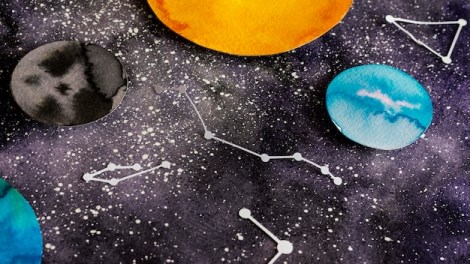Fascinating Facts about Neptune

Neptune is the eighth planet from the Sun.
Neptune is the fourth-largest planet in our solar system.
Neptune’s blue color comes from the gases in its atmosphere.
Neptune has the strongest winds in the solar system, with speeds reaching up to 1,500 miles per hour.
Neptune has a total of 14 known moons.
Triton is the largest moon of Neptune and is the only moon in the solar system to orbit in the opposite direction of its planet’s rotation.
Neptune has a highly dynamic and turbulent atmosphere, with massive storms and dark spots.
The largest storm on Neptune is known as the Great Dark Spot, which was observed by the Voyager 2 spacecraft in 1989.
Neptune’s atmosphere is composed mainly of hydrogen and helium, with traces of methane, which gives it its blue color.
Neptune has rings around it, although they are faint and not as prominent as Saturn’s rings.
Neptune has a very long orbital period, taking about 165 Earth years to complete one orbit around the Sun.
It was named after the Roman god of the sea due to its blue color and strong winds.
Neptune’s atmosphere can reach temperatures as low as -350 degrees Fahrenheit (-210 degrees Celsius).
The pressure on Neptune is so intense that it would crush anything that came into contact with its core.
Due to its distance from the Sun, Neptune receives only about 1/900th of the sunlight that reaches Earth.
Fascinating Facts about Neptune part 2
Neptune was not known to ancient civilizations, as it cannot be seen with the naked eye.
It was first discovered in 1846 by mathematician Urbain Le Verrier and astronomer Johann Galle.
Neptune’s magnetic field is about 27 times stronger than Earth’s.
The Voyager 2 spacecraft is the only spacecraft to have visited Neptune, passing by in 1989.
Neptune’s rings are made up of extremely dark and icy particles.
The average temperature on Neptune is about -353 degrees Fahrenheit (-214 degrees Celsius).
Neptune has an unusual weather pattern, with high-speed jet streams and dark storm patterns that can last for many years.
Calculations suggest that Neptune has a rocky, solid core that is surrounded by a mantle of water, ammonia, and methane ices.
Neptune has a thin set of rings that are made up of dust and small rocks.
Neptune’s axis of rotation is tilted at about 28.32 degrees, similar to Earth’s axial tilt.
One day on Neptune lasts about 16 hours.
Neptune’s gravity is about 17% stronger than Earth’s.
Neptune gives off more heat than it receives from the Sun, due to its internal heat sources.
Neptune’s moon, Triton, has a rugged and icy surface, with cryovolcanoes spewing liquid nitrogen and methane.
Neptune’s winds are so powerful that they can create massive storms and disturbances in the planet’s atmosphere.
Neptune’s atmosphere contains helium, which causes it to have a lower density than Earth’s atmosphere.
Neptune’s moons are named after mythological sea creatures and characters from Shakespearean plays.
Neptune has a faint ring system composed of five individual rings.
Neptune’s Great Dark Spot was a giant storm system that disappeared within a few years.
Neptune has the coldest atmosphere of any planet in our solar system.
Neptune has a retrograde rotation, meaning it spins on its axis in the opposite direction to most other planets.
Neptune is never visible to the naked eye from Earth, and requires a telescope to be seen.
Neptune’s magnetic field is tilted relative to its rotation axis, unlike Earth’s magnetic field.
In 2011, Neptune completed its first full orbit since its discovery in 1846.
The composition of Neptune’s interior is still largely unknown, as there has been no direct exploration of the planet’s interior.
The Voyager 2 spacecraft detected lightning storms in Neptune’s atmosphere during its flyby in 1989.
Neptune’s atmosphere contains traces of hydrocarbons, which contribute to the planet’s blue coloration.
Neptune has a faint, outermost ring known as the Adams ring, which was discovered in 1984.
Despite being similar in size to Uranus, Neptune is denser, indicating a different internal composition.
Neptune’s atmosphere has a distinct feature known as zonal winds, which are bands of clouds that move in alternating directions.

